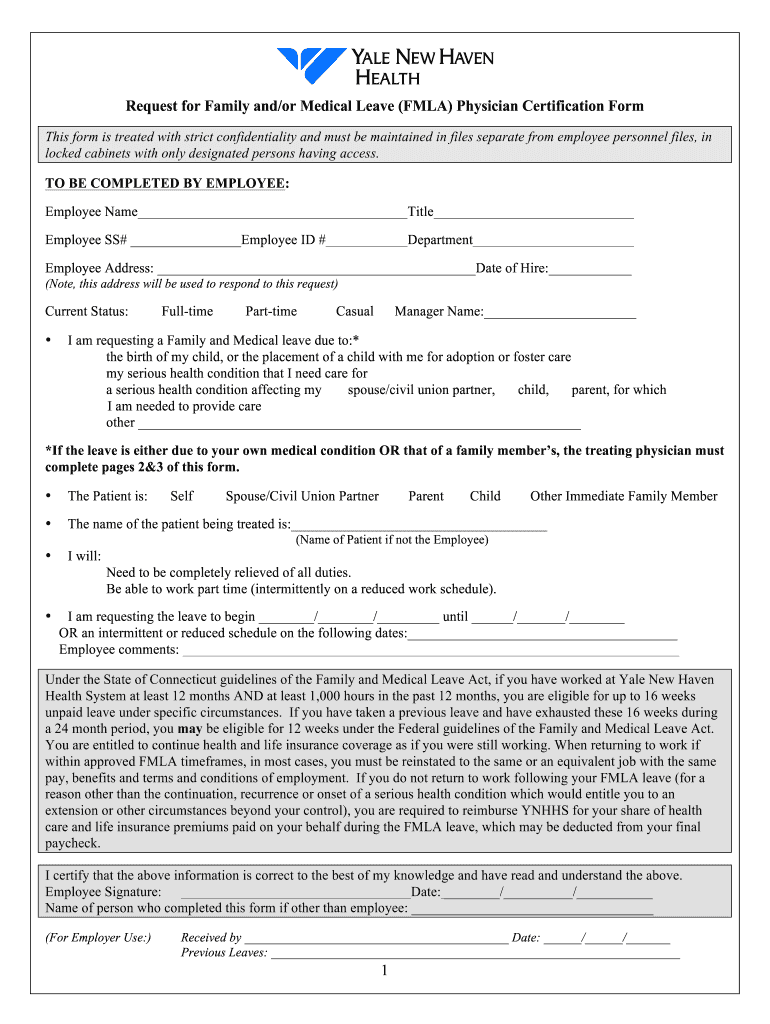FMLA Paperwork: Where to Send It Easily

Understanding the Family and Medical Leave Act (FMLA)

The Family and Medical Leave Act (FMLA) is a significant piece of legislation designed to help employees balance their work and family responsibilities by allowing them to take reasonable unpaid leave for specific family and medical reasons. Knowing where to send FMLA paperwork is crucial as it ensures your leave request is processed promptly, avoiding any confusion or delay.
What is FMLA?

The FMLA provides eligible employees up to 12 workweeks of unpaid, job-protected leave during a 12-month period. This leave can be used for:
- The birth and care of a newborn child of the employee.
- The placement of a child with the employee for adoption or foster care.
- Caring for an immediate family member (spouse, child, or parent) with a serious health condition.
- Medical leave when the employee is unable to work because of a serious health condition.
Eligibility for FMLA

To qualify for FMLA leave, an employee must meet these criteria:
- Work for a covered employer, which includes private sector employers with 50 or more employees, public agencies, and public or private elementary or secondary schools.
- Have worked for the employer for at least 12 months.
- Have at least 1,250 hours of service for the employer during the 12-month period immediately preceding the leave.
- Work at a location where the employer has at least 50 employees within 75 miles.
Where to Send FMLA Paperwork

Once you’ve determined your eligibility and filled out the necessary paperwork, the next crucial step is to ensure these documents are sent to the right place. Here are the common recipients:
1. Human Resources Department

Typically, your first point of contact for any leave-related issues, including FMLA, is the Human Resources (HR) department of your company:
- Submit Forms: Most companies will have specific forms or processes for FMLA requests which can usually be found on the HR website or directly from your HR representative.
- Certification: HR will also handle the certification process, which might require medical certification from healthcare providers.
⚠️ Note: Always retain copies of any documents you submit for your records.
2. Payroll or Benefits Administrator

In some organizations:
- FMLA paperwork might also need to be sent to or coordinated with the payroll or benefits administrator, especially if it impacts health insurance or payroll deductions.
3. Insurance Companies

If you are part of a group insurance plan:
- Sometimes, FMLA paperwork also needs to be sent to the insurer to coordinate benefits during your leave.
4. External HR or FMLA Management Services

Some companies outsource their HR functions or FMLA administration:
- In these cases, you might need to send your FMLA forms to a third-party company designated by your employer for handling leave requests.
Steps to Ensure Proper Submission

To ensure your FMLA paperwork is processed without delay:
- Fill Out Forms Correctly: Make sure all sections of the FMLA forms are completed accurately. Errors or omissions can lead to delays.
- Use Certified Mail: If your company accepts mailed submissions, consider using certified mail or another trackable service to ensure receipt.
- Follow Up: After submitting, follow up with HR to confirm receipt and to inquire about the expected timeframe for approval or any further actions needed.
- Electronic Submission: If your employer provides an electronic submission process, ensure you have confirmations or acknowledgments.
Common Mistakes to Avoid

When dealing with FMLA paperwork, avoiding these common mistakes can save time:
- Missed Deadlines: There are specific timelines for both the employee and employer to follow. Missing these can result in a denial of leave or other complications.
- Incomplete Forms: Make sure all required fields are filled out, especially on medical certification forms.
- Improper Filing: Sometimes employees file the FMLA paperwork with the wrong department or individual within the company.
- Not Informing Supervisors: While HR handles the paperwork, informing your immediate supervisor or manager can help in coordinating your work responsibilities during your absence.
Final Thoughts

As we’ve explored, the process of submitting FMLA paperwork involves several key steps, from understanding eligibility to ensuring your documents reach the right individuals or departments within your organization.
Correct submission, follow-up, and awareness of common pitfalls are essential to making your leave process as smooth as possible. Remember, the purpose of FMLA is to provide relief in times of personal or family medical need, so ensuring your paperwork is processed efficiently allows you to focus on what matters most during your leave.
How do I know if my company qualifies for FMLA?

+
Your company must have at least 50 employees within 75 miles of your worksite for you to be eligible for FMLA leave. It’s always a good idea to check with your HR department to confirm your employer’s status.
What happens if my FMLA paperwork is not processed correctly?

+
If there are issues with your FMLA paperwork, it can delay or deny your leave request. It’s crucial to follow up with HR to ensure your forms are received and processed. If there are mistakes or missing information, you’ll need to correct them as soon as possible.
Can I send FMLA paperwork electronically?

+
Many companies now allow for electronic submission of FMLA paperwork, often through secure HR portals. However, it’s best to confirm with your HR department about the preferred method of submission.



